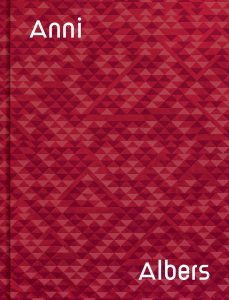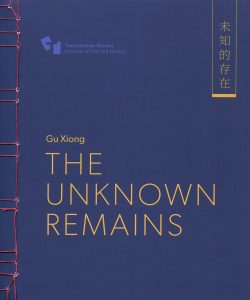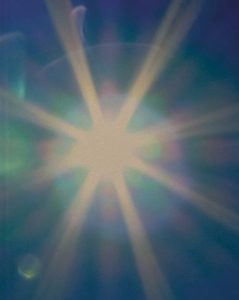Anni Albers: Camino Real

Essay by T’ai Smith in Anni Albers, Anni Albers: Camino Real. New York: David Zwirner Books, 2020
Book information:
The first in-depth study of a monumental wall hanging—rediscovered after many years—by renowned Bauhaus artist Anni Albers, who was influential in elevating textiles from craft to fine art.
Albers was influential in elevating textiles from craft to fine art. Her exquisite wall hanging Camino Real—seen for the first time outside of Mexico City at David Zwirner, New York, in 2019, and the subject of this book—is a superb example of this modern master’s work.
In 1967, noted architects Ricardo Legorreta and Luis Barragán commissioned Albers to create a work for the newly built Hotel Camino Real in Mexico City. Completed in 1968, her striking wall hanging Camino Real is heavily influenced by Latin American art and culture. Showcasing Albers’s approach to working with textiles as a “many-sided practice,” it is accompanied in this book by works Albers made following her move to the United States in 1933, including innovative wall hangings, weavings, and a range of works on paper. Together, these works reflect Albers’s brilliant embrace of different materials and techniques and her ability to work at varied scales. The works in this publication offer additional context and motifs, demonstrating the artist’s pioneering investment in textiles as an art form and her parallel interest in mass-produced designs.
Published on the occasion of the Anni Albers exhibition presented at David Zwirner, New York, in 2019, this catalogue features new scholarship from the show’s curator, Brenda Danilowitz, art historian and chief curator of The Josef and Anni Albers Foundation, and T’ai Smith, an expert on Bauhaus craft and weaving.
For more information: https://www.davidzwirnerbooks.com/product/anni-albers-camino-real
The Unknown Remains

The Unknown Remains, Touchstones Nelson Museum of Art and History, Nelson, BC. Aug. 24 – Nov. 2, 2019. It was a large exhibition and explored migration issues. The show occupied two gallery spaces (2000sq.ft) at the museum and brought such a pertinent historical topic up to today. Through the unveiling of hidden historical narratives, the interweaving of everyday stories once set aside as inconsequential, and the convergence of contemporary art and archival material, it is not only revealed, but created a greater communal connection in the Nelson region.
Historically, migration has started since the early colonization period centuries ago. While stepping into the post-colonial period with the rapid development of globalization, migration has been a complicated issue and global phenomenon, which affects everyone’s life for many reasons. Starting from presenting Canadian migrant workers and their historical connections, Gu Xiong’s solo exhibition The Unknown Remains at Touchstone Nelson aims to raise the topic by looking back to the history of Chinese railway workers in Nelson and further links to the present. Instead of simply addressing historical retrospect, the exhibition focuses more on exploring the present issue and raising the attention and discussion from both historical and present angles. For the audiences, it also provides an opportunity for them to systematically confront and consider their own presence within the globalization and its huge migration trend.
For more information: https://nelsonmuseum.ca/exhibitions/gu-xiong-the-unknown-remains/
The Sioux Project

The Sioux Project—Tatanka Oyate fills a major gap in our understanding of contemporary Sioux aesthetics in North America with a specific focus on the knowledge and practices of Lakota/Nakota/Dakota (Sioux) communities in Saskatchewan, Canada. The publication reflects over three years of on-the-ground research involving a team led by Lakota video/performance artist Dana Claxton, art historian Lynne Bell, artist Gwenda Yuzicappi, and filmmaker Cowboy Smithx. The video footage gathered over the course of multiple visits to Sioux communities across Saskatchewan formed the basis of Claxton’s four-channel video installation at the MacKenzie Art Gallery in Regina, Saskatchewan in 2017.
Texts by Bell, Smithx, and MacKenzie Head Curator Timothy Long, as well excerpts from video interviews with community participants, speak to the community-based methodology of this research-creation project and the significance of Claxton’s installation. Densely illustrated with stills and in-situ shots of the installation, the texts offer a moving community portrait of how the traditional knowledge of elders is being actively transmitted to and translated by a generation that is as comfortable with video mashups as they are with star quilts and beadwork. Produced for academic, artistic and broader communities, the publication includes a consideration of how Sioux aesthetics have been defined by communities and artists in North America, both historically and in the contemporary period in essays by scholars Janet Catherine Berlo and Carmen Robertson, with a reprint of the work of Dr. Bea Medicine.
For more information: https://i-o.cc/books/the-sioux-project